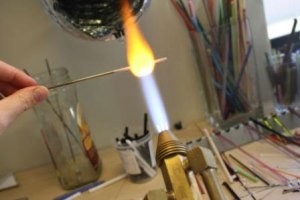Hydrogen welding, brazing and cutting
Hydrogen is used in soldering, cutting and welding metal.
 Comparing hydrogen technology to those used in conventional welding, it can be said that it is absolutely harmless.
Comparing hydrogen technology to those used in conventional welding, it can be said that it is absolutely harmless.
Where there is no source of electricity, it is appropriate to use acetylene cylinders and generators.
However, the gas-welding equipment is heavy.
There is a solution – a familiar settings can be forgotten if they come to replace the light hydrogen vehicles.
Learning how to operate a hydrogen
This is one of the varieties of flame treatment. When this is replaced by a mixture of combustible gas with oxygen and hydrogen. In the first stages of development of this technology in the welding seam remained too porous and very thin, it does not manage to avoid large amounts of slag. Later they started using oxygen which bind by using small doses of organic substances – hydrocarbons (benzene, hexane, heptane, benzene, toluene).
Now the question remains a source of oxygen.
Hydrogen tanks are dangerous and their use expensive. The main danger – a colorless flame. In daylight it is not visible. The problem solved by decomposition of water into hydrogen and oxygen using electricity.
For this purpose, electrolyzers – special devices that can simultaneously receive both of these substances (H and O).
It is important to know
Hydrogen welding is suitable for use with a low-carbon steel, as well as various types of iron. The exception is stainless steel. Why is that? Hydrogen dissolved in molten nickel, and at the time of solidification of the metal is released again, causing the formation of surface cracks.
Do not give in welding and copper – its surface is not even oxidized.
Similarly, but with a few changes you can make the welding machine or apparatus for burning a simplified structure for use in the home.
Current source may be the vehicle battery. A product gas can escape through the needle of the syringe diameter of 0.6-0.8 mm. Gas flame size will depend on the voltage and current electrodes.

